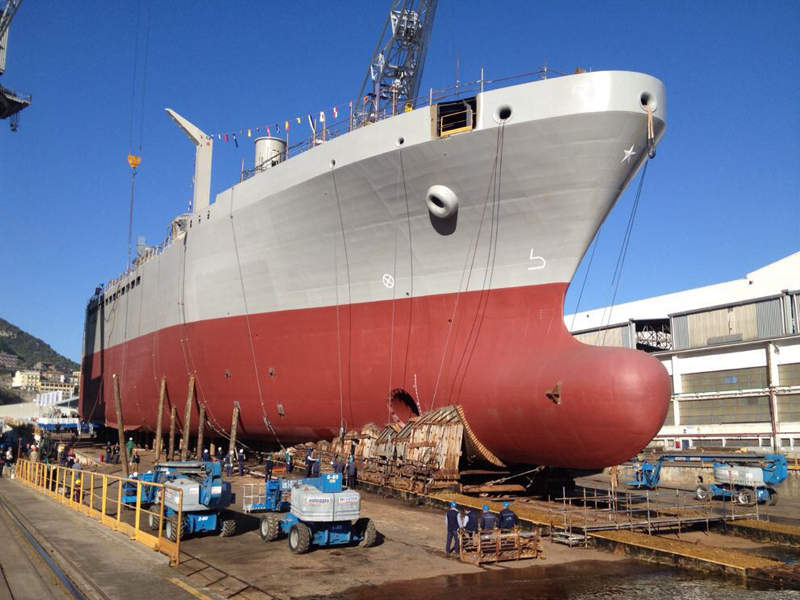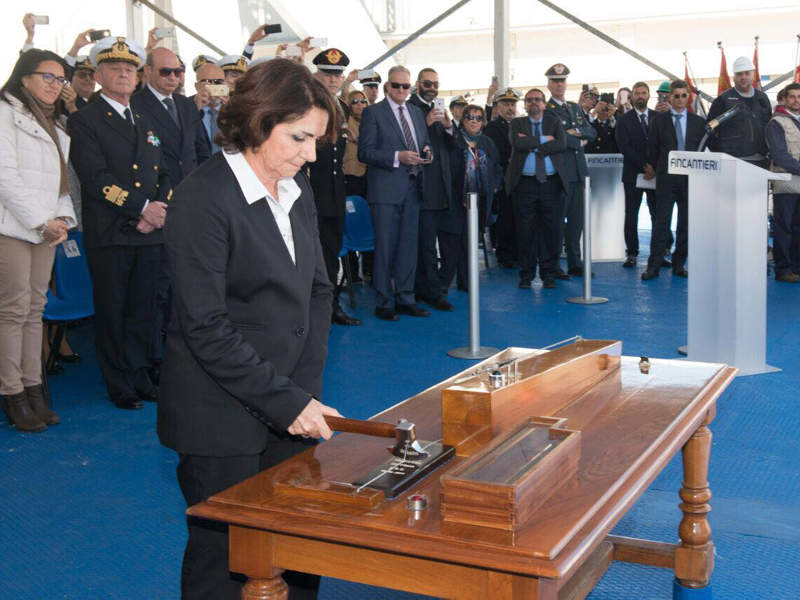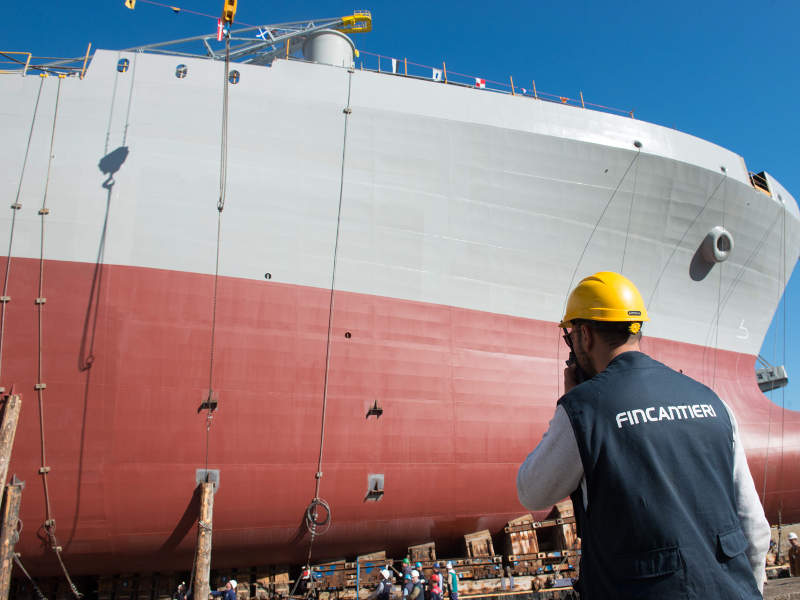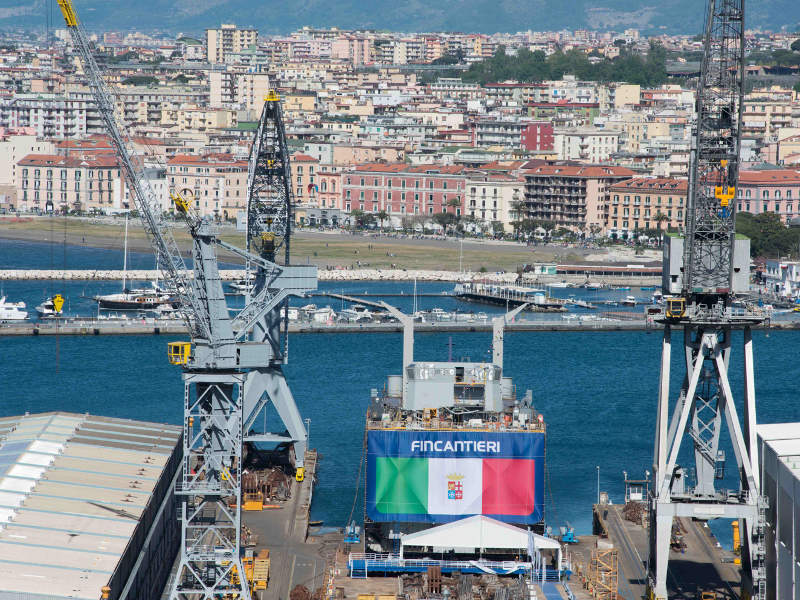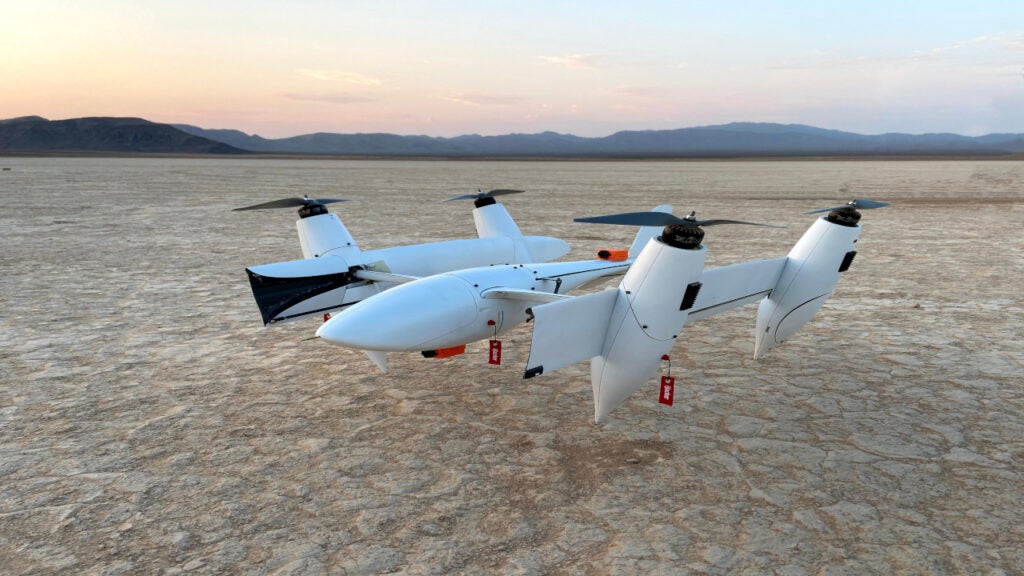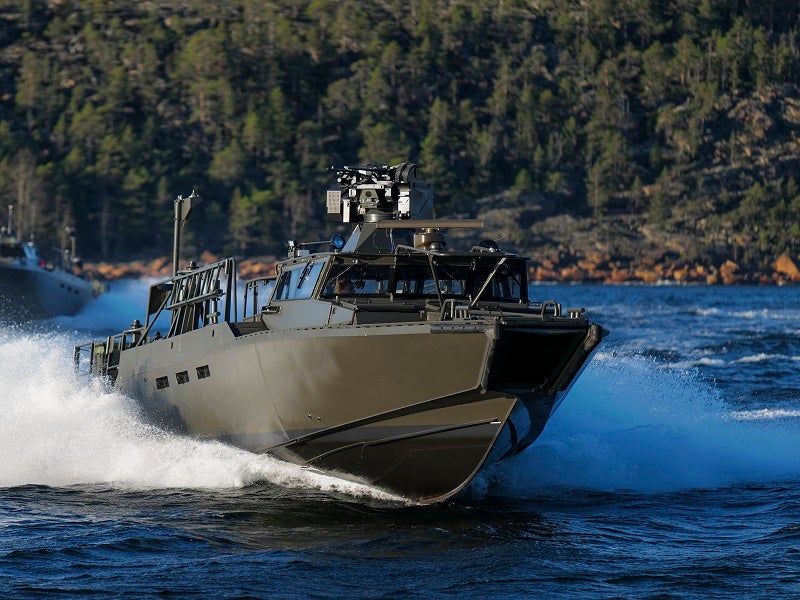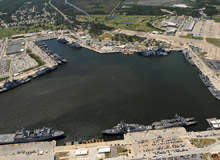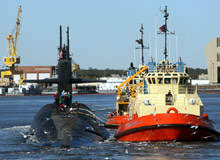The Vulcano logistic support ship (LSS) being built by Fincantieri for the Italian Navy is scheduled to be commissioned in 2019.
The LSS is designed to transport and transfer liquid and solid cargos to other ships at sea and ashore. It can accommodate payloads such as jet and diesel fuel, fresh water, ammunition, defence systems, food, containers, spares, and 2,500kW of electrical power.
It can be used to provide support for naval joint task forces deployed in humanitarian assistance, disaster relief and civil protection operations. The LSS can also be used to perform ship repair and maintenance services for other vessels at sea.
Vulcano vessel construction details
A consortium of Fincantieri and Finmeccanica (now Leonardo) was selected by the Organisation for Joint Armament Cooperation (OCCAR) for the construction of a LSS as part of the Italian Navy’s fleet renewal programme. The programme also includes building six multi-purpose offshore patrol ships, with an option to build four more, in addition to one transport and landing vessel.
The ship’s bow section was constructed at Fincantieri’s shipyard in Castellammare di Stabia, Italy, while the stern section was built at Riva Trigoso shipyard in Genoa.
The first piece of steel on both fore and aft sections was cut in February 2016. The keel-laying of the bow section took place in October 2016, while the launching ceremony was held in April 2017. Keel for the stern portion was laid at Riva Trigoso shipyard in July 2016.
Both units were fitted out at Muggiano shipyard floating dock in La Spezia, Italy, to form the LSS.
The launching ceremony of the ship took place at the Muggiano (La Spezia) facility of the Naval Integrated shipyard in June 2018. First sea trials are planned for the second quarter of 2018, while sea acceptance trials are scheduled for later in the same year. The logistics support platform is expected to be delivered to the Italian Navy in February 2019.
Design, features and capacities of Vulcano LSS
The Vulcano LSS features a double-hull with bulbous bow. The overall length of the vessel is 193m and the length between perpendiculars is 164.9m. The width and depths are 24m and 16.3m, respectively.
The ship’s 4,100t front portion is 94m long and 16.3m high, while the aft section has a length of 86m and weight of 7,000t.
With a full-load displacement of 23,000t, the LSS can accommodate a total of 200 people, including 167 crew members and special officers. Fully equipped hospital and healthcare facilities will be integrated into the ship to provide treatment for up to 12 injured personnel.
The LSS will also have four replenishment stations amidships and one at the stern. Two special-purpose vessels will be carried in the middle of the ship, on the port and starboard sides, to conduct search-and-rescue operations at sea.
The vessel will be able to embark up to eight residential and healthcare modules. A 30t capacity crane will be fitted to lift cargo in and out of ships.
The Vulcano will have a hangar towards the stern to house and maintain up to two EH101 Merlin utility helicopters. A flight will be placed next to the hangar to allow take-off and landing of a NH90 multi-role helicopter or an EH101 Merlin utility helicopter.
Combat capabilities of the Italian Navy’s LSS
Self-defence for the LSS from surface targets is provided by two 25mm remote-controlled machine guns. The LSS can be optionally fitted with a 76mm main gun to engage air and surface targets.
The vessel will carry diver detection and obstacle avoidance sonar systems to detect, track and identify underwater threats and obstacles.
A modular, reconfigurable combat management system is installed to provide command and control for the on-board weapons and sensors. It also assists operators in situational awareness, planning and decision-making functions.
Sensors
A Janus stabilised electro-optical system incorporating video and infrared cameras will be fitted to provide day/night surveillance through 360° at medium and long ranges.
The sensor suite also includes multi-band satellite systems, integrated communication systems, software-defined radio, X-band and Ka-band radars, and an identification friend or foe (IFF). It also includes RAN 21S medium-range air/surface surveillance radar, helo decking radar and long-range acoustic devices.
The ship is also equipped with an internal networking system.
Propulsion of the LSS
The Italian Navy’s LSS will be powered by a combined diesel-electric and diesel (CODLAD) propulsion system comprising two MAN Diesel and Turbo 20V32/44CR main engines rated at 12,000kW each.
The propulsion system will also include two 1,500kW electrical engines or two controllable-pitch propellers, four MAN 6L27/38 generator sets, which deliver an output power of 2,084kW each, one emergency diesel engine generator and one propeller shaft.
Performance
The vessel will have the ability to sail at a maximum speed of 20k and can travel up to a distance of 7,000nmi at speeds of 16k. It will be able to conduct missions for a period of 30 days.

